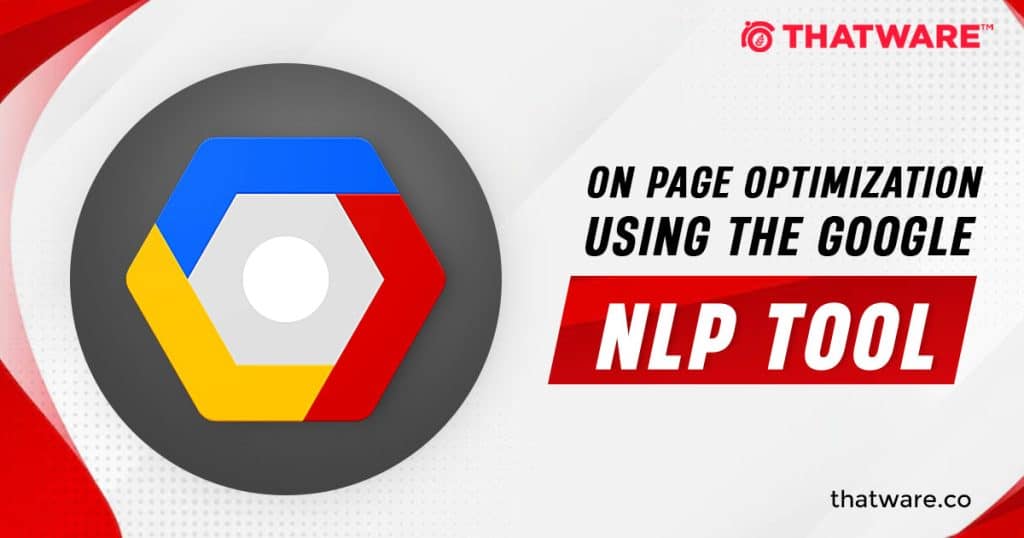SUPERCHARGE YOUR ONLINE VISIBILITY! CONTACT US AND LET’S ACHIEVE EXCELLENCE TOGETHER!
Background to On-Page SEO
For most people, clicking on a link on a web page is the first indication they have of the presence of that page. In fact, as of 2016, 63% of all page views come from links. When someone clicks a link on your page, they are likely to visit the page that is linked to yours. On-page optimization aims to ensure your page is as favorable as possible to those clicking through links.

On-page optimization can take many different forms. One common technique is ensuring the text on your page is well-composed and easy to read. This includes using clear and concise language and avoiding cliches and redundant phrases. Another technique is to optimize and match the search intent of the target keyword to the specific topic or landing page.
On-Page SEO is the most important activity of an SEO campaign as it optimizes the website per the Google Webmaster Guidelines, which is most important for appearing in the Google SERP.
All other activities help in gaining traffic and website authority which serves to improve keyword rankings and hence organic traffic.
The Shift of Google from Keywords to Entities
The shift in search engine optimization from relying solely on keywords to using entities is a key factor. With this shift, Google seeks to understand the semantic context of the query instead of just the literal meaning of the words.
This shift has enabled search engine algorithms to create a much more sophisticated and accurate understanding of a website’s content and value. For example, when searching for basketball shoes, Google can now identify that this refers to a specific type of footwear, not a sport or physical activity.
In order to take advantage of this shift in Google search engine optimization, it is important to understand the different types of entities. Three main entities are keywords, anchors, and snippets. Keywords are the actual words that are being searched for. Anchors are references to other websites or information that help you better understand the topic being searched. Finally, snippets are small summaries of information.
By using these entities in your content, you can ensure that Google understands the context of your page and can give it a higher ranking.
Importance of Semantic Search in Modern SEO
Semantic search has become increasingly important in modern SEO. By taking into account the context of a query, search engines can more accurately return results that match what the user is looking for. This has become even more important with the rise of voice search, as voice queries are often much more contextual than text-based queries.
Semantic search helps ensure that users see results specifically tailored to their needs, making their experience much more efficient and enjoyable.
What To – Do?
This article exclusively focuses on utilizing the Google NLP Tool through the provided demonstration accessible via the following link: https://cloud.google.com/natural-language. It offers a step-by-step guide on navigating the demo interface and leveraging the capabilities of Google’s Natural Language Processing (NLP) technology. Readers will learn how to input text or documents into the demo, explore various features such as entity recognition, sentiment analysis, and content classification, and interpret the results generated by the tool. The article may include screenshots or videos to illustrate the process and highlight key functionalities of the Google NLP Tool. By concentrating solely on the demo, readers can gain practical insights into harnessing the power of NLP for tasks such as text analysis, content understanding, and semantic interpretation, without delving into the broader technical aspects of the technology.
Step 1:To find top keywords on the second or third search page, use tools like Google Search Console, SEMrush, or Ahrefs. Look for relevant terms with decent search volume. These keywords show visibility but need improvement for the first page. Analyze competitiveness, search intent, and alignment with your strategy. Target terms balancing attainability and impact, considering user relevance and trends. Optimize content and apply on-page SEO to boost rankings and attract more organic traffic.
Step 2: Selecting a keyword, such as “best smartphones,” and examining the top three ranking pages on the search engine results page (SERP) provides valuable insights into the competitive landscape. The first-ranking page might offer a comprehensive listicle of top-rated smartphones, featuring detailed reviews and comparisons. Meanwhile, the second-ranking page could be a forum thread discussing user experiences with various smartphone models, offering a mix of opinions and insights. Finally, the third-ranking page might be a product page from a reputable technology website, showcasing the latest smartphone releases with specifications, prices, and purchasing options. By analyzing these top-ranking pages, one can identify common themes, content formats, and strategies used to optimize for the chosen keyword, informing their own approach to enhance visibility and competitiveness in the SERP.
Step 2: To run page URLs in Textile format and copy the displayed on-page content, you would first need to convert the URLs into Textile markup language, which is a lightweight markup language used primarily for formatting text. This involves encapsulating the URLs within appropriate Textile syntax, such as enclosing them within quotation marks or brackets to indicate hyperlinks. Once converted, the Textile-formatted URLs can be inserted into a Textile editor or processor, which will then display the on-page content associated with those URLs. This process allows for the extraction and presentation of the textual content from the specified web pages in a structured format, facilitating further analysis or manipulation as needed.
Step 3: Utilize the Google NLP Tool available at https://cloud.google.com/natural-language to paste the text and gain detailed insights. This powerful tool employs advanced natural language processing algorithms to analyze text for various aspects such as entity recognition, sentiment analysis, and content classification. By inputting your text into the tool, you can uncover valuable information about the entities mentioned, the overall sentiment conveyed, and the thematic categorization of the content. Leveraging this tool provides a comprehensive understanding of the text’s characteristics, enabling informed decision-making in content optimization, market research, and sentiment analysis endeavors.
Step 4: In the Entity Section of the Google NLP Tool, extract all pertinent entities with a salience exceeding 0.01 that are absent from the currently mapped landing page. These entities represent key topics, people, or organizations relevant to the broader context of the content but not explicitly addressed on the specified landing page. By identifying such entities, one can uncover additional content opportunities or areas for optimization to ensure comprehensive coverage of relevant subjects and enhance the page’s relevance and authority.
(Make sure to avoid stopwords or irrelevant words. Identify words that qualify as an entity. Eg: Person, service, product, feeling, activity, etc.)
Step 5:Continuing the process, repeat the analysis for the remaining two top-ranking competitor pages, identifying relevant keywords and entities. Utilize tools like Google Search Console, SEMrush, or Ahrefs to assess their keyword performance, search intent, and content strategy. Compile a list of entities mentioned prominently across all competitor pages, including brands, products, services, and related terms. Recommend incorporating these entities into the client’s target landing page to enhance its relevance and visibility. By aligning content with competitor strategies and integrating key entities, the client’s page can better compete for search engine rankings and capture organic traffic effectively.
Step 6: Repeat steps 1-5 for other low-hanging keyword opportunities by systematically analyzing search results beyond the first page using tools like Google Search Console, SEMrush, or Ahrefs. Explore keywords with reasonable search volume and relevance to your content that are currently positioned beyond the initial pages. Conduct a thorough assessment of their competitiveness, search intent, and alignment with your overall content strategy. Prioritize keywords offering a blend of feasibility and potential impact, taking into account user relevance and emerging search trends. Apply strategic optimization tactics, including content refinement and on-page SEO enhancements, to capitalize on these opportunities and elevate your website’s visibility in search engine rankings, thereby expanding organic traffic acquisition.
Example
We performed the above exercise on an example website: indiarep.co
Identified Keyword:
back office services india
Present organic position: 18
Current
Top 2 Ranking Pages:
https://www.backofficepro.com/
https://www.truppglobal.com/services/back-office-support
Important Entities Obtained From: https://www.backofficepro.com/
Video Editing
Image Editing
Video Audio Editing
Data Visualization Audio
BPO services
Data Processing
Video Brochure
ePub
Geotagging Engineering Services
Real Estate
Flash Animation
3D Animation
BackOffice
Important Entities Obtained From: https://www.truppglobal.com/services/back-office-support
PHOTO EDITING
Live Chat Support Technical Support
Data Entry Internet Research
HEALTHCARE
Document retrieval
Live Chat Support Technical
BPO Charge Entry Payment
SOFTWARE DEVELOPMENT Web
Conclusion:
Need to revamp the on-page content of the target landing page and input the above entities into the content to enrich it and make it more semantically relevant to the keywords that we are targeting.

Thatware | Founder & CEO
Tuhin is recognized across the globe for his vision to revolutionize digital transformation industry with the help of cutting-edge technology. He won bronze for India at the Stevie Awards USA as well as winning the India Business Awards, India Technology Award, Top 100 influential tech leaders from Analytics Insights, Clutch Global Front runner in digital marketing, founder of the fastest growing company in Asia by The CEO Magazine and is a TEDx speaker and BrightonSEO speaker.


